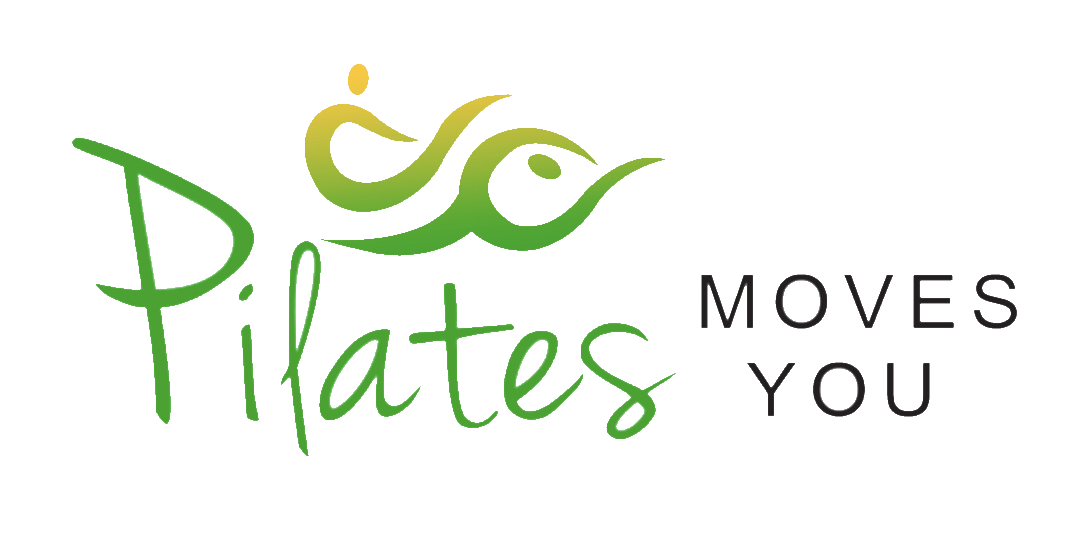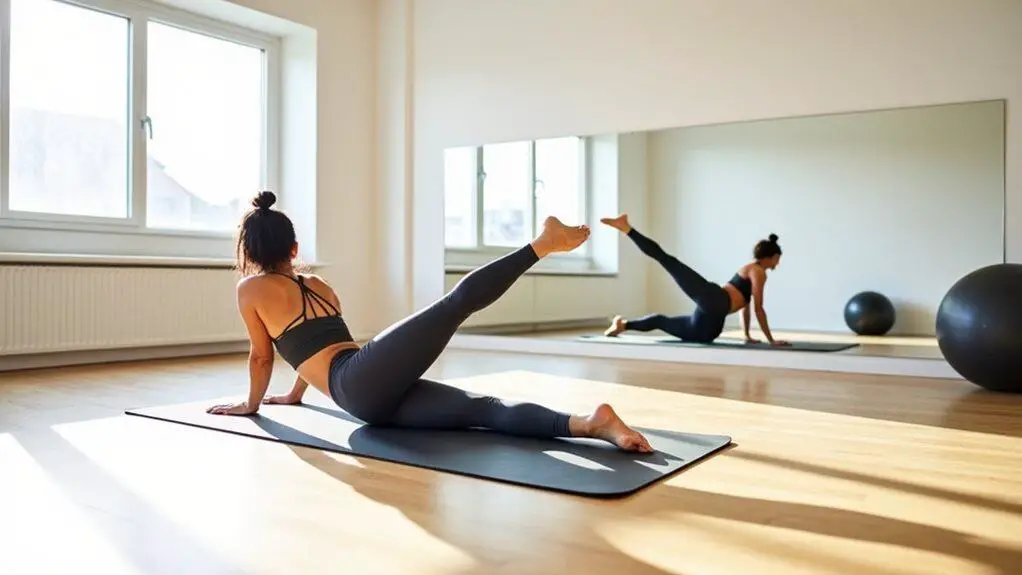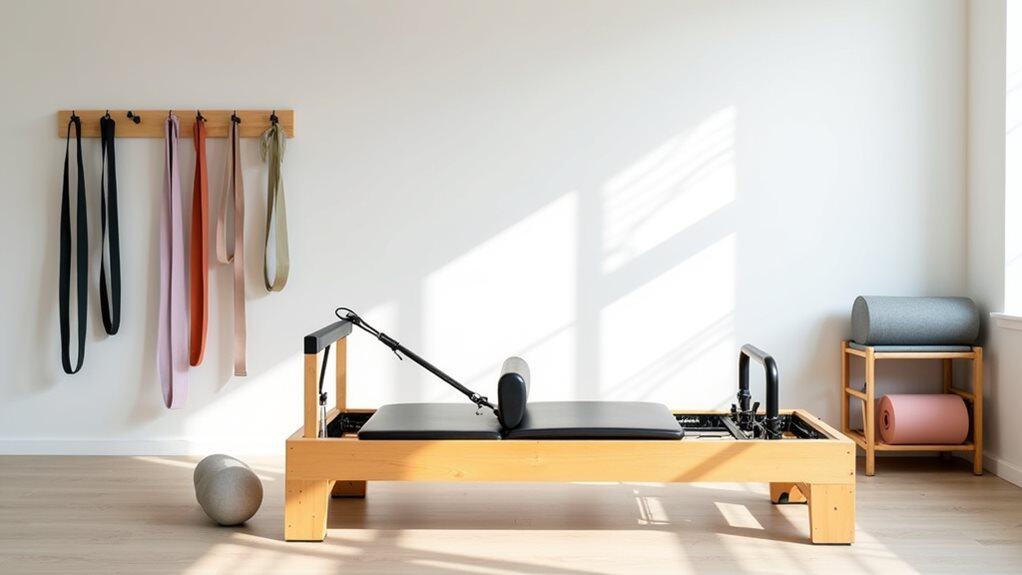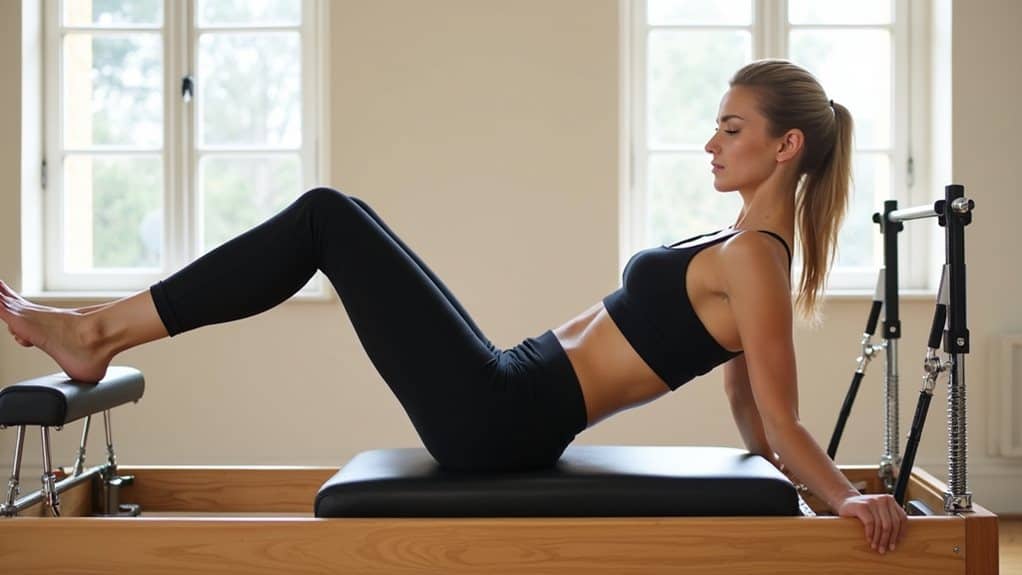You’ve been through a lot lately. Maybe you had an injury, illness, or surgery that left you feeling weak and defeated. Perhaps you’re dealing with chronic pain that makes it hard to accomplish daily tasks. Whatever your situation may be, one thing is certain: you want to regain your strength and independence.
That’s where Pilates comes in. This form of exercise offers a unique approach to rehabilitation by focusing on building core strength, improving flexibility, and promoting mind-body connection. Whether you’re recovering from an injury or simply looking to improve your physical abilities, Pilates can help you rebuild, recover, and excel in ways you never thought possible.
In this article, we’ll explore the many benefits of Pilates for rehabilitation and show you how to find a qualified instructor who can guide you on your path to healing.
So let’s get started!
What is Pilates?
You may already be familiar with the physical practice that focuses on controlled movements, precise alignment, and breath work. This practice is none other than Pilates, a form of exercise that’s gaining popularity worldwide due to its numerous benefits for physical and mental health.
Pilates was developed by Joseph Pilates in the early 20th century as a way to improve overall strength, flexibility, balance, and posture. The origins of Pilates can be traced back to Joseph Pilates’ childhood years when he suffered from various health conditions such as asthma and rickets. He was determined to overcome these ailments through physical fitness and began studying different forms of exercise including yoga, martial arts, gymnastics, and bodybuilding.
From his studies and personal experiences, he developed a set of principles that would become the foundation of his unique approach to fitness. These principles include concentration, control, centering, precision, breath, and flow. By incorporating these principles into his exercises, Joseph Pilates created a system that not only addresses physical issues but also promotes mental clarity and emotional well-being.
With its focus on mind-body connection and gentle yet effective movements, it’s no wonder why Pilates has become a popular choice for rehabilitation programs worldwide. Its many benefits range from improving mobility after surgery or injury to reducing chronic pain caused by conditions like arthritis or fibromyalgia.
So, let’s explore how this powerful practice can help you rebuild your body from within!
Benefits of Pilates for Rehabilitation
When recovering from an injury or surgery, you want to find a rehabilitation program that will help you rebuild your strength and mobility without causing further damage.
Pilates is an excellent low-impact exercise option that emphasizes controlled movements and precise form, making it ideal for those seeking rehabilitation.
With a customized plan tailored to your specific needs, Pilates can help you rebuild muscle and improve joint mobility while minimizing the risk of re-injury.
Low-Impact Exercise
Low-impact exercises can be a great choice for those looking to stay active without putting too much strain on their joints. Pilates, in particular, is an excellent low-impact exercise that offers numerous benefits for rehabilitation. With low impact modifications available, you can tailor your workout to your specific needs and abilities, making it easier to progress at your own pace.
In addition to being gentle on the joints, Pilates also provides cardiovascular benefits. The controlled movements and precise form required during Pilates help increase heart rate and improve circulation. This makes it an ideal exercise for those recovering from injury or surgery who need to take it slow while still getting their heart pumping.
As you move onto the next section about controlled movements and precise form, keep in mind that these elements are crucial in harnessing the full healing potential of Pilates for rehabilitation.
Controlled Movements and Precise Form
Get the most out of your Pilates workout by mastering controlled movements and precise form. Precision training is critical in Pilates, as it helps you target specific muscle groups and achieve optimal results.
By focusing on mindful movement, you can ensure that each exercise is performed correctly, with proper alignment and engagement of muscles. To achieve controlled movements, start by focusing on your breath. Inhale deeply to prepare for the movement, then exhale slowly as you engage your core and move through the exercise.
Throughout the movement, pay attention to your body’s alignment and make necessary adjustments to maintain proper form. Remember that quality over quantity should always be prioritized in Pilates – a few well-executed exercises are better than many poorly executed ones.
By mastering controlled movements and precise form in Pilates, you’ll not only see physical benefits but also improve mental focus and awareness. This will help set the foundation for rebuilding muscle and improving joint mobility in subsequent sections without compromising safety or risking injury.
Rebuilding Muscle and Improving Joint Mobility
You’ll be able to regain strength and flexibility in your muscles and joints with the exercises in this section, allowing you to move more freely and confidently.
Muscle rebuilding is an important aspect of rehabilitation, as it helps restore function and prevent future injuries. Pilates exercises target specific muscle groups, building them up gradually through controlled movements that are challenging but not overwhelming.
Improving joint mobility is also a key component of pilates-based rehabilitation. Many people experience limited range of motion after an injury or surgery, which can make everyday activities difficult. By focusing on joint mobilization exercises, you’ll be able to increase your range of motion and reduce pain. This will allow you to perform daily tasks with ease and improve your overall quality of life.
As you continue to rebuild your muscles and improve your joint mobility through pilates-based rehab, it’s important to remember that everyone’s journey is unique. A customized rehabilitation plan tailored specifically for you will ensure that you’re getting the most out of each session.
In the next section, we’ll discuss how a personalized plan can help accelerate your recovery process even further.
Customized Rehabilitation Plan
Don’t worry if you feel overwhelmed or unsure about the rehabilitation process, a customized plan will take into account your unique needs and limitations to help you reach your goals at a pace that is comfortable for you.
A personalized fitness routine can be created by a certified Pilates instructor who has experience in working with clients undergoing rehabilitation. They’ll work with you to assess your current level of fitness, identify areas that need improvement, and tailor exercises specifically to address those concerns.
Your customized rehabilitation plan may include exercises that focus on strengthening specific muscle groups, improving joint mobility, balance training, and breathing techniques.
The beauty of Pilates is that it can be modified for any fitness level or physical limitation. As you progress through your program, modifications can be made to continue challenging you while still being safe and effective.
With consistency and dedication to your plan, you’ll start feeling stronger and more confident in no time. Who can benefit from Pilates? Let’s dive into the next section where we explore how people recovering from injuries or dealing with chronic pain can benefit from this low-impact form of exercise.
Who Can Benefit from Pilates?
If you’re looking for a low-impact way to improve your physical fitness and flexibility, Pilates may be an excellent option for you. It’s a form of exercise that focuses on strengthening the core muscles while also improving balance, posture, and coordination. Pilates is suitable for people of all ages and abilities, including those recovering from injury or dealing with chronic conditions.
Here are three types of individuals who can benefit from incorporating Pilates into their fitness routine:
-
People looking to prevent injuries: Pilates is known for its emphasis on proper alignment and body mechanics, which can help reduce the risk of injury during other physical activities.
-
Women seeking pregnancy fitness: Many prenatal Pilates classes are available that can help expectant mothers maintain their strength and flexibility throughout their pregnancy.
-
Individuals recovering from injuries: Because it’s a low-impact form of exercise, Pilates can be an effective way to rehabilitate after an injury or surgery.
As you explore the benefits of Pilates, let’s now move onto basic Pilates exercises that will help get you started on your journey towards healing and wellness.
Basic Pilates Exercises
As you begin to explore basic Pilates exercises, it’s essential to understand the importance of proper breathing techniques. By focusing on inhaling and exhaling in a controlled manner, you can maximize the benefits of each movement.
Additionally, mastering the pelvic tilt is crucial for strengthening your core and improving posture. Leg circles and spinal twists are also fundamental movements that can help increase flexibility and strengthen your back muscles.
With consistent practice of these exercises, you’ll begin to feel more confident in your body’s abilities and develop a strong foundation for more advanced Pilates movements.
Breathing Techniques
Breathe deeply and imagine your lungs expanding like a hot air balloon, filling you with calmness and energy as you learn the vital breathing techniques in this section.
Pilates isn’t just about movement—it’s also about breath control techniques that help improve your overall well-being.
Diaphragmatic breathing is one of the most important breathing techniques used in Pilates to enhance relaxation and reduce stress. With diaphragmatic breathing, you inhale through your nose, filling up your lungs while letting them expand downward into your abdomen. As you exhale through pursed lips, you contract your abdominal muscles, pushing out all the air from your lungs.
This technique helps activate the parasympathetic nervous system, which promotes relaxation and reduces anxiety levels. By learning these powerful breathing techniques in Pilates, you’ll be able to manage stress better and promote healing within yourself.
Now, let’s move on to pelvic tilt exercises, which can help improve core stability and posture.
Pelvic Tilt
Now that you’ve mastered the art of breathing, it’s time to move on to the next important aspect of Pilates – pelvic tilt. Pelvic tilt is crucial for a successful Pilates practice and can help in rehabilitating various injuries, especially those related to the lower back.
Common misconceptions about pelvic tilt include thinking that it’s all about pushing your pelvis forward or backward. However, there’s much more to it than just that. Proper technique involves engaging your core muscles while maintaining a neutral spine position. To achieve this, you need to visualize your pelvis as a bowl filled with water. If you tilt too far forward or backward, the water will spill out!
Variations for different levels include starting with small tilts and progressing to bigger ones once you’ve built up enough strength in your core.
Try these exercises:
- Supine Pelvic Tilts
- Bird Dog
Tips for perfecting your form:
- Keep your feet flat on the ground
- Avoid arching your back
As you continue practicing pelvic tilt, remember that perfect technique takes time and patience. Don’t get discouraged if it doesn’t feel natural at first! Now let’s move on to leg circles without skipping a beat!
Leg Circles
You’re going to love leg circles, as it’s an excellent exercise for injury prevention and muscle activation. With this move, you draw circles with your legs in the air while engaging your core and feeling a burn in your thighs.
Not only does it help strengthen your muscles, but it also increases flexibility in your hips. Leg circles are a great way to activate the stabilizing muscles in your pelvis, which helps prevent injuries.
Performing leg circles can also help increase blood flow to the targeted area, promoting healing and recovery. As you continue to perform this exercise regularly, you’ll begin to notice improvements not only in your physical strength but also in balance and coordination.
Now let’s move on to spinal twists- another fantastic Pilates move that’ll leave you feeling refreshed and energized!
Spinal Twist
Get ready to feel a deep stretch in your back and hips with this rejuvenating spinal twist. One of the many benefits of incorporating spinal twists into your Pilates practice is the release of tension throughout your entire body.
Here are some spinal twist variations to try out:
- Seated Spinal Twist: Sitting cross-legged, place one hand on the opposite knee and gently twist towards it, using your other hand to support you.
- Supine Spinal Twist: Lying on your back, bring one knee up towards your chest and then across your body while keeping both shoulders on the ground.
- Standing Spinal Twist: From a standing position, place one hand on your hip and reach the other arm up before twisting towards the side with the hand on your hip.
- Reclined Spinal Twist: Lying on your back with arms extended out to either side, bring one foot over the opposite leg before slowly bringing both legs over to one side.
Incorporating these variations can help improve flexibility, reduce lower back pain, and promote better digestion. As you continue practicing these twists regularly, notice how they enhance not only physical but also mental wellness by releasing stress and anxiety held within tight muscles.
Now that you’ve learned about the benefits of spinal twists in Pilates practice and tried out some variations yourself, it’s time to move onto advanced Pilates exercises.
Advanced Pilates Exercises
Experience the challenge and fulfillment of elevated Pilates movements with these advanced exercises. As you progress in your Pilates journey, you may feel ready to take on more complex moves that require greater strength, balance, and control.
Advanced Pilates modifications such as the Teaser, Snake Twist, and Jackknife can help you reach new heights in your practice. It’s important to note that these advanced exercises should only be attempted under the guidance of a qualified Pilates instructor who can help ensure proper form and injury prevention.
With their expert knowledge and compassionate approach, they can create a safe environment for you to push yourself further than you ever thought possible. By incorporating these challenging moves into your routine, you’ll not only improve your physical strength but also cultivate a sense of mental fortitude that will carry over into all aspects of your life.
Finding a Qualified Pilates Instructor
Finding a qualified Pilates instructor can be crucial to advancing your practice and avoiding injury. With so many instructors out there, it can be overwhelming to choose one that fits your needs.
When choosing criteria for an instructor, make sure they have the proper qualifications such as being certified through a reputable organization and having experience working with clients who have similar goals or injuries as you.
In addition to qualifications, it’s important to find an instructor who is knowledgeable, experienced, and compassionate. They should be able to modify exercises for any limitations or injuries you may have while still challenging you in your practice. An engaging style of teaching can also contribute greatly to your progress and enjoyment of Pilates.
By finding the right instructor for you, you’ll not only improve faster but also feel more confident in your abilities on and off the mat.
It’s important to take precautions before starting any new exercise program, including Pilates. One way is by checking with your doctor if you have any pre-existing medical conditions that may affect your ability to participate in certain exercises. Another way is by communicating with your Pilates instructor about any physical limitations or concerns so they can adapt exercises accordingly.
Taking these steps will help ensure a safe and effective journey towards healing through Pilates rehabilitation.
Precautions to Take Before Starting Pilates
Before beginning Pilates, it’s important to take necessary precautions and safety measures. These include checking with a doctor to make sure it’s safe for you to begin this form of exercise, especially if you have any pre-existing medical conditions or injuries.
It’s also important to communicate any physical limitations or concerns with your instructor before starting the practice in order to ensure a safe and effective workout. Your instructor can then tailor the exercises to your specific needs and abilities.
Additionally, it’s important to wear comfortable clothing that allows freedom of movement and supportive shoes that provide stability during exercises. Always stay hydrated by drinking water throughout your workout, and never push yourself beyond your limits as this could result in injury.
By taking these necessary precautions, you can safely enjoy the benefits of Pilates without any setbacks or harm.
As you approach conclusion, keep in mind that incorporating Pilates into your rehabilitation routine can greatly assist in rebuilding strength and flexibility while improving overall physical health.
Conclusion: Pilates as a Path to Recovery and Improvement
With Pilates, you can pave the way for a better tomorrow by unlocking your body’s full potential and achieving a healthier lifestyle.
Not only does Pilates provide physical benefits like improved flexibility, strength, and balance, but it also offers emotional wellness through mindful movement and breathwork.
Pilates has been shown to reduce stress and anxiety levels while promoting relaxation and mental clarity.
Beyond physical health, Pilates can help you achieve emotional balance by creating a mind-body connection that fosters self-awareness and mindfulness.
By practicing Pilates regularly, you’ll learn to recognize patterns of tension in your body and release them through controlled movements and breathing techniques.
As you become more in tune with your body, you’ll develop a greater sense of control over your thoughts and emotions, leading to increased confidence and resilience in all areas of life.
So why not start today? With its myriad benefits both physically and emotionally, Pilates is the perfect path to recovery and improvement for anyone looking to harness their full potential.
Frequently Asked Questions
What is the history of Pilates and how did it originate?
If you’re interested in Pilates, it’s important to know its origins and evolution. The method was developed by Joseph Pilates during World War I as a way to help injured soldiers recover their strength and mobility. He drew inspiration from yoga, boxing, gymnastics, and other disciplines to create a system of movements that could be adapted for people with different needs and abilities.
Over time, Pilates became popular among dancers, athletes, and fitness enthusiasts who appreciated its emphasis on core stability, breath control, and mind-body awareness. Today, Pilates continues to evolve as new research sheds light on its benefits for physical rehabilitation, stress reduction, and overall well-being.
By understanding the history of Pilates, you can gain a deeper appreciation for this powerful tool for personal transformation.
Can Pilates be used as a preventative measure for injuries or is it strictly for rehabilitation?
If you’re looking for a preventative measure against injuries, then Preventative Pilates might just be what you need. By focusing on core strength, stability, and flexibility, Pilates can help improve your overall body mechanics and reduce the risk of injury.
For instance, imagine you’re a runner who wants to prevent knee pain caused by overpronation. With Preventative Pilates exercises that target your hips and glutes muscles, you’ll be able to stabilize your pelvis and distribute the impact evenly throughout your legs instead of putting too much stress on your knees.
Injury prevention is always better than rehabilitation, so why not start incorporating Pilates into your fitness routine?
How often should one practice Pilates for optimal rehabilitation results?
To achieve optimal rehabilitation results, frequency recommendations for Pilates practice vary based on individual needs and goals. Generally speaking, practicing Pilates 2-3 times a week can lead to noticeable improvements in strength, flexibility, and overall well-being.
However, it’s important to note that not all Pilates variations are created equal – some may be more effective than others depending on the specific injury or condition being addressed. Working with a knowledgeable and experienced Pilates instructor can help you tailor your practice to your unique situation, ensuring that you’re getting the most out of every session.
And beyond just physical benefits, regular Pilates practice can offer a sense of freedom by helping you reconnect with your body and move with greater ease and confidence in everyday life.
Can Pilates be incorporated into other forms of exercise or is it best done on its own?
You may be wondering if Pilates can be incorporated into other forms of exercise or if it’s best done on its own. Well, the answer is both yes and no.
Combining Pilates with other workouts like CrossFit can have its pros and cons. On one hand, you’ll get a great full-body workout that challenges your strength and endurance. On the other hand, you may not fully engage your core muscles during CrossFit exercises, which could lead to injury over time.
Pilates for runners is another popular combination, as it can help improve flexibility and reduce the risk of injury. However, there are also some challenges to incorporating Pilates into a running routine, such as finding the time to do both types of workouts consistently.
Ultimately, whether you choose to combine Pilates with other exercises or stick to doing it on its own depends on your personal goals and preferences. As someone who’s experienced the benefits of Pilates firsthand, I encourage you to explore all your options and find what works best for you in your journey towards physical freedom.
Are there any specific medical conditions or injuries that may not benefit from Pilates rehabilitation?
If you have challenging conditions or injuries, it’s important to approach Pilates rehabilitation with caution. While Pilates is a low-impact exercise that can benefit many people, there are certain conditions that may not be well-suited for this type of therapy.
For example, if you have severe joint pain or inflammation, high-intensity Pilates workouts may exacerbate your symptoms and cause further damage. Additionally, if you’ve recently undergone surgery or have other medical concerns, alternative approaches may be more appropriate for your needs.
It’s always a good idea to consult with a healthcare professional before beginning any new exercise program, especially if you have preexisting medical conditions.
Conclusion
Congratulations on taking the first step towards using Pilates for rehabilitation! With consistent practice, you can rebuild your strength, recover from injuries, and excel in your physical capabilities.
Pilates is a gentle yet effective form of exercise that focuses on building core strength, flexibility, and balance. Remember to find a qualified instructor who can guide you through the exercises safely and provide modifications as needed.
Take precautions before starting any exercise program, such as consulting with your healthcare provider and listening to your body’s needs. Embrace the process of healing and improvement with patience and compassion for yourself.
As Joseph Pilates once said, “Physical fitness is the first requisite of happiness.” By incorporating Pilates into your rehabilitation journey, you’re not only improving your physical health but also boosting your overall well-being.
So keep practicing those basic and advanced exercises, trust in the healing potential of Pilates, and embrace the joy of movement.




